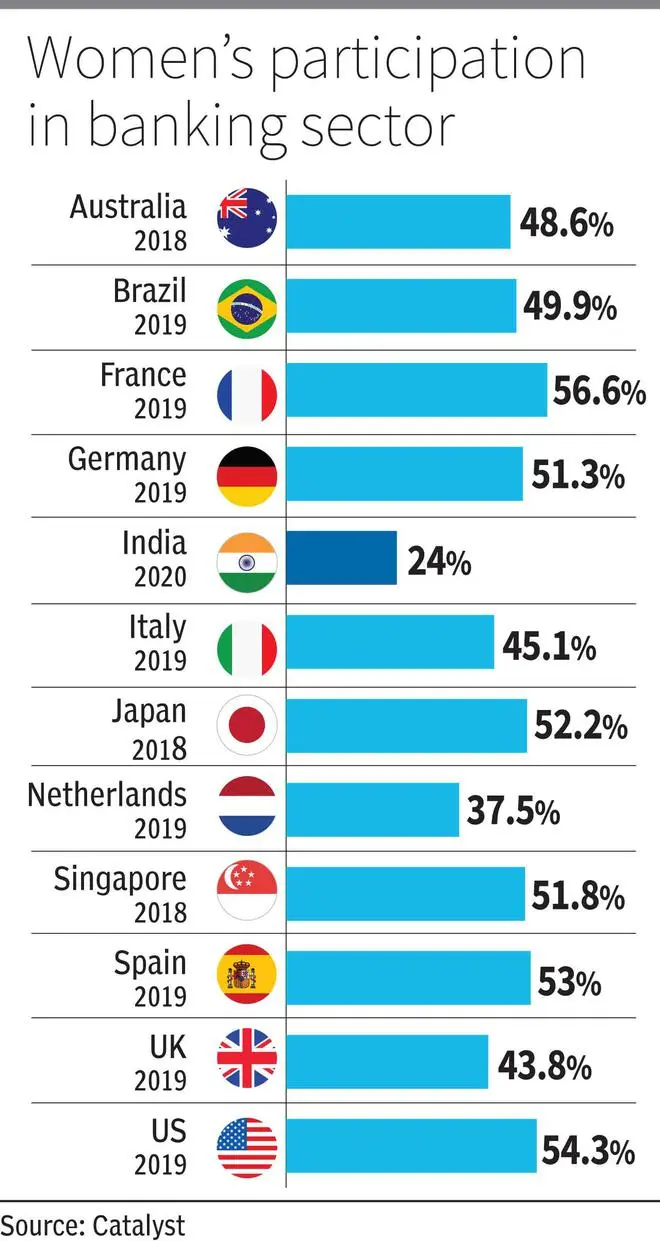It is disheartening that gender parity has not got the required attention in the top echelons of the Indian financial sector (‘Gender parity yet to take firm root at RBI and SEBI’, businessline, January 27, 2023). The story is not different in the banking sector.
Women are reaching new heights in almost all walks of life in India. However, Indian banks continue to be a male bastion, despite a slew of gender-inclusion initiatives by the government. With the explosive growth in the banking sector since the introduction of economic reforms in 1991, new avenues of employment are being created for women. In general, women have a fascination for bank jobs due to growth opportunities and competitive pay. However, the general pattern of employment in the sector over a 15-year period reveal a different picture.
From 2006-07 to 2020–21, the proportion of total female employees in the banking sector has barely increased. In all scheduled commercial banks (SCBs), the proportion of total female employees to total employees over the 15-year period, rose only by 9.1 percentage points — that is, from 14.8 per cent in 2006-07 to 23.9 per cent in 2020-21. In public sector banks (PSBs), the proportion of women employees during this period rose by 12.7 percentage points — from 14.3 per cent to 27 per cent. In private and foreign banks, the participation of women in the workforce registered only a small growth of 0.1 per cent and 2.4 per cent, respectively, in 2020-21. It cannot be denied that the nationalisation of banks gave a fillip to the inclusion of women in the banking sector.

Until the 1990s, women made up barely 10 per cent of the banking workforce. The proportion of women was the highest only in the clerical grade, at 22 per cent in 2005-06. Since then, it increased to 27 per cent in 2015-16 and 31.7 per cent in 2020-21. Despite the increasing trend in women’s employment in the Indian banking sector, the proportion of female employees in all SCBs remains less than a quarter (24.17 per cent), with only 3,97,005 female employees out of the 16,42,804 total employees in 2021-22.
India is far behind its global counterparts in terms of the number of women bank employees. In the US banking industry, the proportion of female employees in 2021 was approximately 56.3 per cent, and in Canada they accounted for 46.7 per cent of all professional banking jobs.

Another point of concern is that Indian banks are yet to understand the significance of gender inclusion at the top level. Many research studies on the issue have empirically proven that gender parity is a prerequisite for an inclusive, stable and efficient banking system. But there is still a glass ceiling that prevents women from assuming leadership positions in Indian banks; no Indian bank at present has a woman CEO and, according to a report, only 13 women occupy board positions (in 12 PSBs), representing 10.66 per cent of 122 directors. Even this was possible due to the legal compulsion of having one woman on the board as per Section 49 of the Indian Companies Act, 2013.
This trend raises some questions: Is the poor representation of women in the banking sector a result of the socio-cultural prejudices prevailing till now and the patriarchal mindset of the male dominated recruitment committees? Have the recently implemented gender inclusive policies — of six months of maternity leave and two years of child care — affected entry and upward mobility in banking jobs? Is imposter syndrome a factor in women’s aversion towards high-profile positions?
The country has a pool of talented, dedicated and responsible women at all levels of the banking sector, who require proper nurturing through appropriate mentoring and friendly HR policies. Federal Bank and HDFC Bank, for instance, have made a beginning by unfurling diversity and inclusion agendas. Other banks should follow suit so as to join hands with the Nari Shakti Movement of the government.
The writer is Professor and Head, Department of Banking Management, Alagappa University. With inputs from S Abinaya, Research Scholar








Comments
Comments have to be in English, and in full sentences. They cannot be abusive or personal. Please abide by our community guidelines for posting your comments.
We have migrated to a new commenting platform. If you are already a registered user of TheHindu Businessline and logged in, you may continue to engage with our articles. If you do not have an account please register and login to post comments. Users can access their older comments by logging into their accounts on Vuukle.